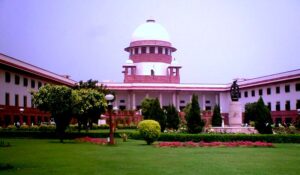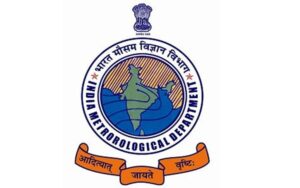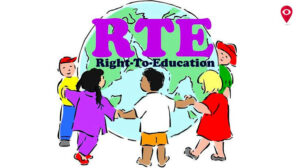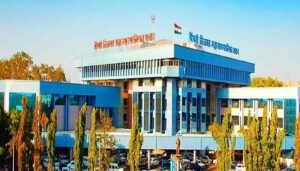Cabinet apprised of the progress under National Health Mission and decisions of the Empowered Programme Committee and Mission Steering Group of NHM
The Union Cabinet chaired by the Prime Minister Shri Narendra Modi has been apprised of the progress under National Health Mission (NHM). The Cabinet was also apprised of the decisions of the Empowered Programme Committee (EPC) and Mission Steering Group (MSG) of NHM. National Rural Health Mission (NRHM) was launched in April 2005 and it morphed into National Health Mission (NHM) with launch of National Urban Health Mission (NUHM) during 2013. Thereafter, NRHM and NUHM became two sub-missions under the overarching NHM.
Cabinet noted the progress under NHM including accelerated decline in MMR, IMR, U5MR and TFR. It also noted the progress in respect of various disease control programmes like TB, Malaria, Leprosy etc.
The Cabinet noted that:
- The rate of decline in U5MR during NHM period has nearly doubled.
- With the rate of decline achieved in MMR, India would have achieved the target of MDG 5.
- Millennium Development Goal6 of halting and reversing the incidence of Malaria, TB and HIV/AIDS had been achieved.
- Number of endemic blocks with prevalence more than 1 case of Kala Azarper 10000 population was 230 in 2010. It has been brought down to 94 blocks in 2016.
- Incentives were being provided @ of Rs 150 to Post-Partum Intra-Uterine Contraceptive Device (PPIUCD) service provider and Rs 150 to ASHA for motivating/escorting the client for PPIUCD insertion. To provide impetus for uptake of PPIUCD and Post-Abortion Intra-Uterine Contraceptive Device (PAIUCD) services, proposals for provision of incentives to the acceptor of PPIUCD services and incentives on the same pattern for PAIUCD were placed before the MSG. The MSG approved proposals for providing an incentive to acceptors of the PPIUCD to cover incidental cost and travel cost for follow up visits and provision of incentives for PAIUCD insertion tor acceptor, service provider and ASHA at the same rates as applicable to PPIUCD.
- Relaxation of norm of one MMU per 10 lakh population in cases where patients served through existing MMUs exceeds 60 patients per day in plain areas and 30 patients per day in hilly areas, on a case to case basis. The MSG also noted the operational guidelines for MMUs.
- The proposals under Menstrual Hygiene Scheme for Adolescent girls to – (i) increasethe budget support from Rs.8 to Rs.12 for a pack of 6 sanitary napkins for the first year for the 19 States that are yet to take up the scheme and thereafter at the existing rate of Rs 8 for a pack of 6 sanitary napkins and (ii) authorise Ministry to approve any further cost escalations.
- Increase in ceiling of Programme Management Budget under NHM, including monitoring and evaluation, from existing 6.5% to 9 % of the total Annual Work Plan for that year for bigger States and existing 11% to 14 % of the total Annual Work Plan for that year for smaller States/UTs.
- Proposal for strengthening of school health activities under NHM in all the public and private schools in the country in coordination with Ministry of Human Resource Development through specified activities including promotion of healthy lifestyle behaviours.
- Incentive to ASHA @ Rs 100 per month for mobilising and conducting mother’s meeting for promotion of breast feeding for conducting Mother’s Group Meeting under Mother’s Absolute Affection (MAA).
Implementation Strategy:
- Facilitate increased access and utilization of quality health services by all.
- Forge a partnership between the Central, state and the local governments.
- Set up a platform for involving the Panchayati Raj institutions and community in the management of primary health programmes and infrastructure.
- Provide an opportunity for promoting equity and social justice.
- Establish a mechanism to provide flexibility to the states and the community to promote local initiatives.
- Develop a framework for promoting inter-sectoral convergence for promotive and preventive health care.
Targets:
- Achievement of universal access to equitable, affordable & quality healthcare services that are accountable and responsive to people’s needs.
Major impact:
- Under 5 Mortality Rate (U5MR): Declined from 59 in 2010 to 43 in 2015. Percentage annual rate of decline during 2010-2015 has accelerated to 6.1% from 3.7% observed during 1990-2010. Annual rate of decline in 2014-15 was 4.4%. India is likely to have achieved the Millennium Development Goal 4 of U5MR at the present rate of decline.
- Maternal Mortality Ratio (MMR):(number of maternal deaths per 100,000 live births) declined from 178 during 2010-12 to 167 during 2011-13. Subsequent data is yet to be notified by RGI. India is likely to have achieved the Millennium Development Goal 5 of MMR at the rate of declines that were achieved.
- Infant Mortality Rate (IMR)(number of deaths of children less than one year of age per 1000 live births) – declined from 39 in the year 2014 to 37 in 2015.
- Total Fertility Rate (TFR) – declined from 2.5 in 2010 to 2.3 in the year 2015 (Presently it is 2.2 as per NFHS 2015-16). We are likely to achieve the 12thFive Year Plan target for TFR of 2.1 by 2017.
- Malaria APIhas declined from 1.10 in 2011 to 0.84 in 2016. The 12th Plan target in respect of Malaria has been achieved and the API has been kept below 1 case per 1000 population.
- Mortality due to TBper 100000 population reduced from 40 in 2010 to 36 in 2015. Prevalence per 100000 population reduced from 465 in 1990 to 195 in 2014. Similarly, incidence of TB per 100000 population also been reduced from 289 in 2000 to 247 in 2010 and to 217 in 2015. The annual prevalence and mortality from TB have been reduced to half as compared to 1990 level.
- Leprosy Prevalence Rateat the national level per 10000 population has been reduced from 0.68 as on 31st March, 2012 to 0.66 as on 31st March, 2017. By March 2017, 556 districts had achieved the 12th Plan target.
- Kala Azar – Number of endemic blocks with prevalence more than 1 case of Kala Azar per 10000 population was 230 in 2010 which has been reduced to 94 by 2016.
- Filariasis– Till 31st March 2017, 94 districts achieved <1% Mf rate out of 256 endemic districts which was validated by Transmission Assessment Survey (TAS) and successfully stopped Mass Drug Administration (MDA).
In the period from 2012-13 to 2016-17, the amount released to States and UTs was 88,353.59 crore (including kind grants) while Rs 18,436.03 crore (including kind grants) was released to States and UTs during the financial year 2016-17.
NHM is implemented for universal benefit – i.e. entire population; services are offered to everyone visiting the public healthcare facilities; However during 2016-17, total people who availed Out-Patient services in public facilities was 146.82 Cr and 6.99 Cr people availed In-Patient services. Public health facilities carried out 1.55 crore surgeries during 2016-17.
It will cover all States and Districts in the country.
Programmes already running:
National Health Mission (NHM), has two Sub-Missions, viz. the National Rural Health Mission (NRHM) and the National Urban Health Mission (NUHM). While NRHM was launched in April 2005, launch of NUHM was approved by the Cabinet on 1st May 2013. NHM envisages achievement of universal access to equitable, affordable & quality healthcare services that are accountable and responsive to people’s needs. The main programmatic components include Health System Strengthening in rural and urban areas, Reproductive-Maternal-Neonatal-Child and Adolescent Health (RMNCH+A) interventions and control of Communicable and Non-Communicable Diseases.
Progress under NHM during 2016-17 is as under:
The following initiatives were also rolled out under NHM during 2016-17:-
- New Vaccines roll out:
- Measles-Rubella (MR) Vaccine: Rubella vaccine introduced in Universal Immunization Programme as Measles-Rubella combination vaccine to provide protection against congenital birth defects caused by Rubella infection. The vaccine was introduced on 5th February 2017, initially in five states namely Tamil Nadu, Karnataka, Goa, Puducherry & Lakshadweep though MR vaccination campaign for children aged between 9 months and 15 year. Till 31st March 2017, 3.32 crore children were vaccinated in MR vaccination campaign in these States.
- Inactivated Polio Vaccine (IPV): India is polio free but to maintain this status, IPV launched on 30th November 2015.
- Adult Japanese Encephalitis (JE) vaccine: National Vector Borne Disease Control Programme (NVBDCP) had identified 21 high burden districts from Assam, Uttar Pradesh and West Bengal for adult JE vaccination in the age-group of 15- 65 years and more than 2.6 crore adults in these 21 districts were provided JE vaccination.
- Rota-Virus vaccine: To prevent morbidity and mortality in children due to rotavirus, Rotavirus vaccine introduced in Universal Immunization Programme. In first Phase, vaccine introduced in 4 states: Andhra Pradesh, Haryana, Himachal Pradesh and Odisha; Planned to be scaled up in few more states after evaluation of its implementation in four states.
- MissionIndradhanush (MI)
- Mission Indradhanush was launched in December 2014 to rapidly increase the full immunization coverage of children to at least 90% and sustain the same by 2020.
- Three phases of Mission Indradhanush have been completed and fourth phase is ongoing. A total of 528 districts were covered in the four phases of Mission Indradhanush. During the three phases and ongoing fourth phase of Mission Indradhanush, as on 31st March’ 2017, around 2.11 crore children were reached of which 55 lakhs children were fully immunized. Further, 56 lakhs pregnant women were also vaccinated with Tetanus Toxoid.
- The first two phases of Mission Indradhanush led to an increase of 6.7% in the full immunization coverage across the country.
- During 2016-17, Mission Indradhanush Phase-3 was carried out in 216 districts during which around 61.84 lakh children were reached of which 16.28 lakh children were fully immunized. Further, 17.78 lakh pregnant women were also vaccinated with Tetanus Toxoid.
- Free Drugs Service Initiative:
- Support provided to States for provision of free drugs and setting up of systems for drug procurement, quality assurance, IT based supply chain management system, training and grievance redressal etc.
- Aimed at reducing Out of Pocket Expenditure at the point of care.
- Detailed Operational Guidelines developed and released to the States on 2nd July 2015.
- Model IT application Drugs and Vaccines Distribution Management Systems (DVDMS), developed by CDAC, shared with States.
- Drugs procurement, quality system and distribution streamlined through IT based Drug Distribution Management Systems in 23 States.
- All States and UTs have notified policy to provide essential drugs free in public health facilities.
- Free Diagnostics Service Initiative:
- Operational Guidelines developed and shared on 2nd July, 2015
- Also contain model RFP documents for a range of PPPs e.g. Tele radiology, hub and spoke model for lab diagnostics and CT scan in District Hospitals.
- Bio Medical Equipment Maintenance:
- Aim – reduce dysfunctional rate of bio-medical equipment in public health facilities valuing about Rs 11,000 crores (varies between 20% -60% in States)
- States did inventory mapping and BMMP effectively rolled out in 13 States during 2016-17.
- Total 7,56,750 number of equipments in 29,115 health facilities of 29 States, costing approximately Rs. 4,564 Crore identified.
- Rs. 113.11 Crore approved in 2016-17 to 20 States/ UTs under this initiative.
- Launch of Kayakalp- an initiative for Award to Public Health Facilities:
- Launched to promote cleanliness, hygiene and infection control practices in public health facilities.
- During 2016-17, Kayakalp initiative extended to Sub District Hospitals (SDHs) /CHCs and PHCs in addition to DHs
- Approved Rs 107.99 crore to 27 States.
- Over 30,000 Public Health facilities assessed and over 1100 public health facilities including 179 DHs, 324 SDHs/CHCs and 632 PHCs received Kayakalp Prizes.
- Kilkari & Mobile Academy:
- Weekly time-appropriate 72 audio messages about pregnancy, child birth and child care directly sent to families’ mobile phones from the second trimester of pregnancy until the child is one year old.
- Bihar, Chhattisgarh, Delhi, Haryana, Himachal Pradesh, Jharkhand, Madhya Pradesh, Odisha, Rajasthan, Uttar Pradesh and Uttarakhand covered under Kilkari.
- Approximately 5.82 crore successful calls (average duration of content played in each call: approximately 1 minute) made under Kilkari as on 31st March, 2017.
- Mobile Academy –free audio training course designed to expand and refresh knowledge base of Accredited Social Health Activists (ASHAs) and improve their communication skills.
- Rolled out in Bihar, Himachal Pradesh, Jharkhand, Madhya Pradesh, Rajasthan, Uttar Pradesh and Uttarakhand.
- 79,660 ASHAs registered in MCTS started the Mobile Academy course, out of which 68,803 (i.e, approximately 86%) ASHAs completed the course as on 31st March, 2017.
- Mother and Child Tracking System (MCTS) / Reproductive and Child Health (RCH) portal
- Web based name based tracking system called Mother & Child Tracking System (MCTS) across all the States & UTs to facilitate timely delivery of entire complement of quality MCH services including antenatal and postnatal care services to all the pregnant women and immunization to all the children.
- 1.68 crore pregnant women and 1.31 crore children registered in MCTS / RCH portal as on 31st March, 2017.
- Family Planning – Three new methods introduced in the National Family Planning program:
- Injectable Contraceptive DMPA (Antara) –3-monthly injection.
- Centchroman pill (Chhaya) –non hormonal once a week pill.
- Progesterone-only pills (POP) – for lactating mothers.
- New Family Planning Media Campaign:
- A 360oholistic Family Planning campaign with a new logo launched.
- Revised National TB Control Programme (RNTCP)
- 121 Cartridge Based Nucleic Acid Amplification Test (CBNAAT) Machines existed till 2016.
- 500 additional CBNAAT Machines provided in States/UTs
- Provides rapid quality diagnostics for fight against TB, especially DR-TB.
- New anti-TB drug Bedaquiline introduced under Conditional Access Programme (CAP) to improve outcomes of drug resistant TB treatment.
Background:
The Cabinet approvals of the NHM framework provided for setting up of the Mission Steering Group (MSG), chaired by the Union Minister of Health & Family Welfare with 10 Ministers of related Ministries, 16 Secretaries, 10 independent experts, 4 State Secretaries etc and the Empowered Programme Committee (EPC), chaired by the Secretary, Department of Health & Family Welfare. Besides policy guidance and oversight, these bodies have been delegated powers to provide and approve/ modify financial norms in respect of all schemes and components that are part of NRHM. The Cabinet approval further stipulates that exercise of these delegated powers would be subject to the condition that a progress report regarding N(R)HM, along with deviation in financial norms, modifications in ongoing schemes and details of new schemes be placed before the Cabinet for information on an annual basis.








